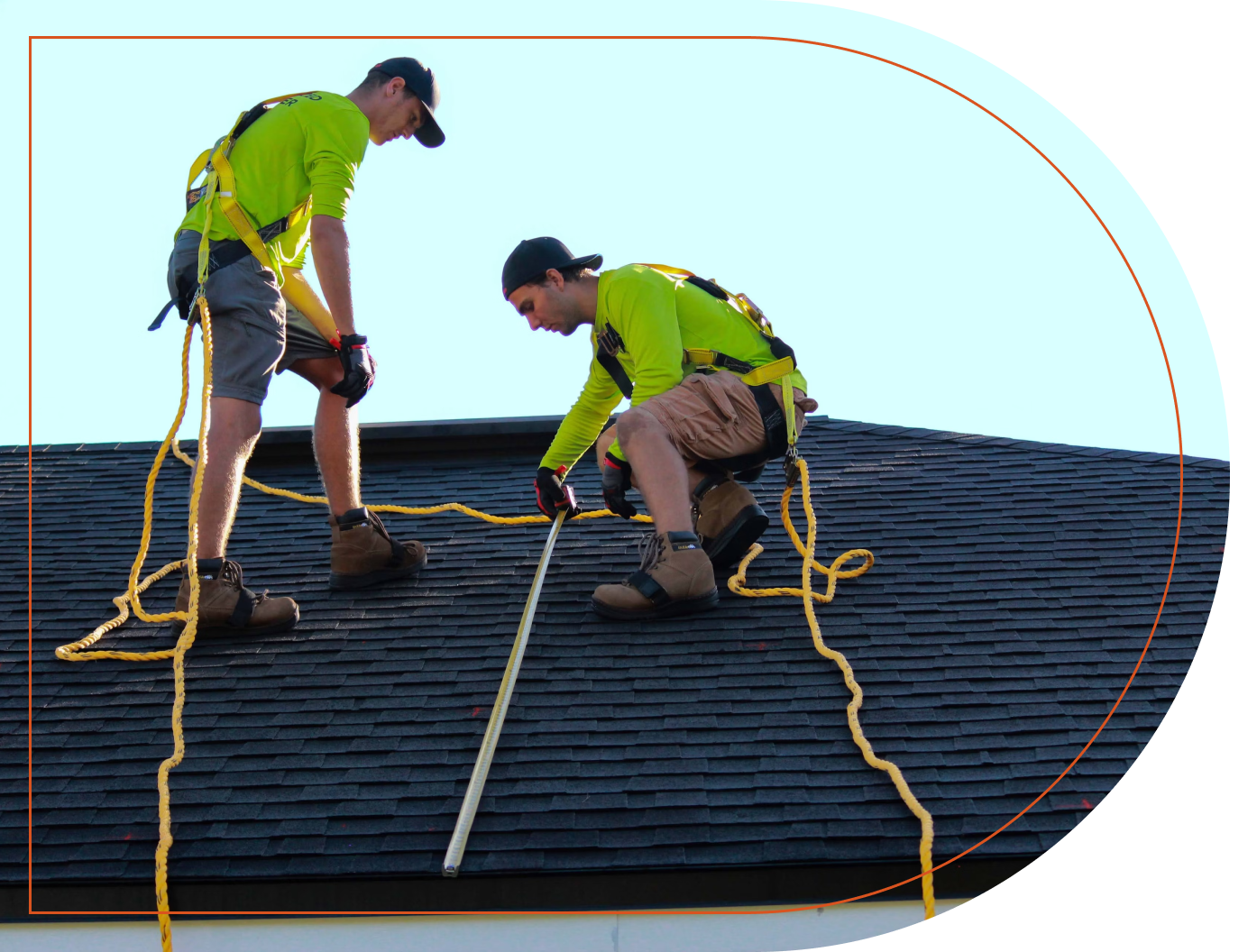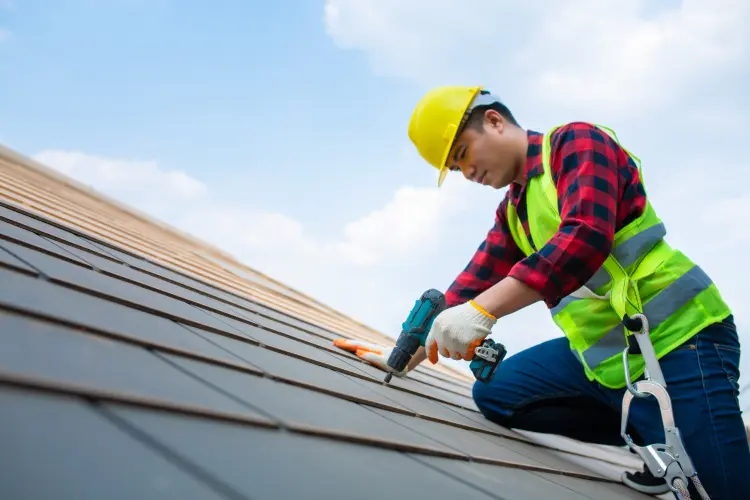Trusted Flat Roof Installation in Cuyahoga Falls by Experienced Roofing Professionals
Common Errors to Avoid During Roofing Flat Roofing System Setup Projects
Flat roof covering setup projects require thorough interest to detail, as overlooking usual mistakes can substantially reduce the roofing system's performance and lifespan. As the implications of these errors come to be apparent, comprehending the subtleties of appropriate setup methods is necessary for guaranteeing a dependable and durable flat roof system.
Overlooking Appropriate Drain

Designing an efficient water drainage system involves purposefully positioning drains pipes, scuppers, and gutters to promote the proper circulation of water far from the roofing system surface. Additionally, the roofing's incline must be very carefully thought about, as even a mild slope can considerably boost drain capabilities. Failure to account for these variables can lead to substantial water management concerns.
In addition, regular maintenance of the water drainage system is important. Debris, such as fallen leaves and dirt, can obstruct drain paths, exacerbating water build-up and causing further issues. By focusing on correct water drainage during the setup phase, house owners can alleviate long-term dangers, preserve the roofing's architectural integrity, and prolong the lifespan of the roof covering system. Eventually, a tactical water drainage method is vital for making sure the performance and integrity of flat roofing installments.
Missing High Quality Product Checks
One common oversight in level roofing setup is the failing to conduct thorough high quality examine roofing products. This oversight can result in significant long-term concerns, as the sturdiness and performance of the roof mostly depend on the high quality of the products utilized. Poor inspections can cause using second-rate membrane layers, insufficient waterproofing products, or low-grade insulation, which can jeopardize the integrity of the whole roof covering framework.
Stopping working to validate the requirements of roof covering materials can additionally result in compatibility problems. Using inappropriate sealants or adhesives can result in early failing of the roof system. Poor-quality products might not fulfill neighborhood building codes or producer service warranties, leaving home owners prone to pricey repairs and replacements.
To mitigate these risks, it is important to establish a rigorous quality control process that includes validating the credentials of vendors, checking out materials upon distribution, and conducting tests as required. Investing time in these top quality checks ensures that the roof setup is not just certified with industry standards but also adds to the durability and performance of the flat roof covering. Ultimately, this persistance will conserve time and sources in the future.
Neglecting Insulation Requirements
Many property owners and contractors underestimate the significance of proper insulation in flat roofing installments (Cuyahoga Falls Roof Repairs). Ample insulation is vital not just for energy efficiency yet also for the long life of the roof covering system. Insulation helps to control indoor temperatures, protecting against warmth loss in winter and warm gain in summer season, which can bring about considerable savings on energy bills
Disregarding insulation needs can cause a host of troubles, including ice dam mold and mildew, formation, and condensation growth. These concerns can jeopardize the architectural honesty of the roofing and result in pricey repair services. In addition, not enough insulation might void service warranties on roofing products, leaving property owners monetarily at risk if concerns occur.
Properly evaluating the roof framework and recognizing the specific insulation requires based on climate and roofing system style is vital. Involving with a qualified roofing Continued professional can guarantee that insulation is mounted appropriately, therefore enhancing power effectiveness and expanding the roofing's lifespan.
Failing to Adhere To Maker Standards
Overlooking producer guidelines during flat roofing system installment can bring about substantial concerns down the line. These standards are designed to ensure optimal efficiency, longevity, and security of the roof covering system. Each manufacturer gives particular instructions concerning products, installation methods, and upkeep demands that are vital for the roofing system's stability.
When installers depart from these recommendations, they run the risk of compromising the roof's waterproofing capacities, which can result in leaks and architectural damages. Additionally, incorrect setup can void service warranties, leaving homeowner prone to costly fixings.
Additionally, makers typically carry out strenuous testing of their products under regulated conditions. Neglecting their specs means neglecting the science behind the materials, which can lead to early failing. The recommended adhesive or bolt types might be critical in securing the roof membrane layer; using alternatives can endanger the roof's efficiency.
Underestimating Weather
Proper level roofing installment calls for an extensive understanding of different factors, including the impact of climate condition. Ignoring to make up these problems can bring about considerable concerns throughout and after the installment procedure. Extreme temperatures, whether chilly or warm, can affect the materials used, altering their adhesion properties and compromising the roof's integrity.
For circumstances, installing roof covering products during exceedingly high temperature levels can create them to warp or end up being excessively flexible, resulting in inappropriate securing. Alternatively, low temperature levels can impede the correct curing of adhesives, resulting in weak bonds that may fail in the lengthy term. Rain and wind additionally pose considerable dangers; moisture can penetrate the roof system during installation, bring about mold and mildew growth and structural damage.

Conclusion
In conclusion, avoiding common errors during flat roofing system installation is essential for guaranteeing the roofing system's integrity and longevity. Attention to appropriate drainage, strenuous high quality material checks, adherence to insulation requirements, compliance with supplier standards, and consideration of weather conditions are crucial factors. By focusing on these aspects, the risks of leaks, product failing, and minimized efficiency can be substantially reduced, ultimately bring about a successful and resilient roofing project. Mindful preparation and execution are see here now important for optimum look at this website results.
Flat roof covering setup tasks require meticulous focus to information, as overlooking typical blunders can substantially reduce the roofing's effectiveness and life expectancy. By focusing on appropriate drain throughout the setup phase, house owners can minimize long-term risks, maintain the roofing system's architectural honesty, and extend the life expectancy of the roofing system.One typical oversight in level roof covering installation is the failing to perform comprehensive high quality checks on roof covering materials. Investing time in these high quality checks makes certain that the roof covering installation is not just certified with sector criteria yet also contributes to the durability and efficiency of the flat roof covering.In final thought, staying clear of usual blunders during level roof covering installment is crucial for ensuring the roof's stability and durability.